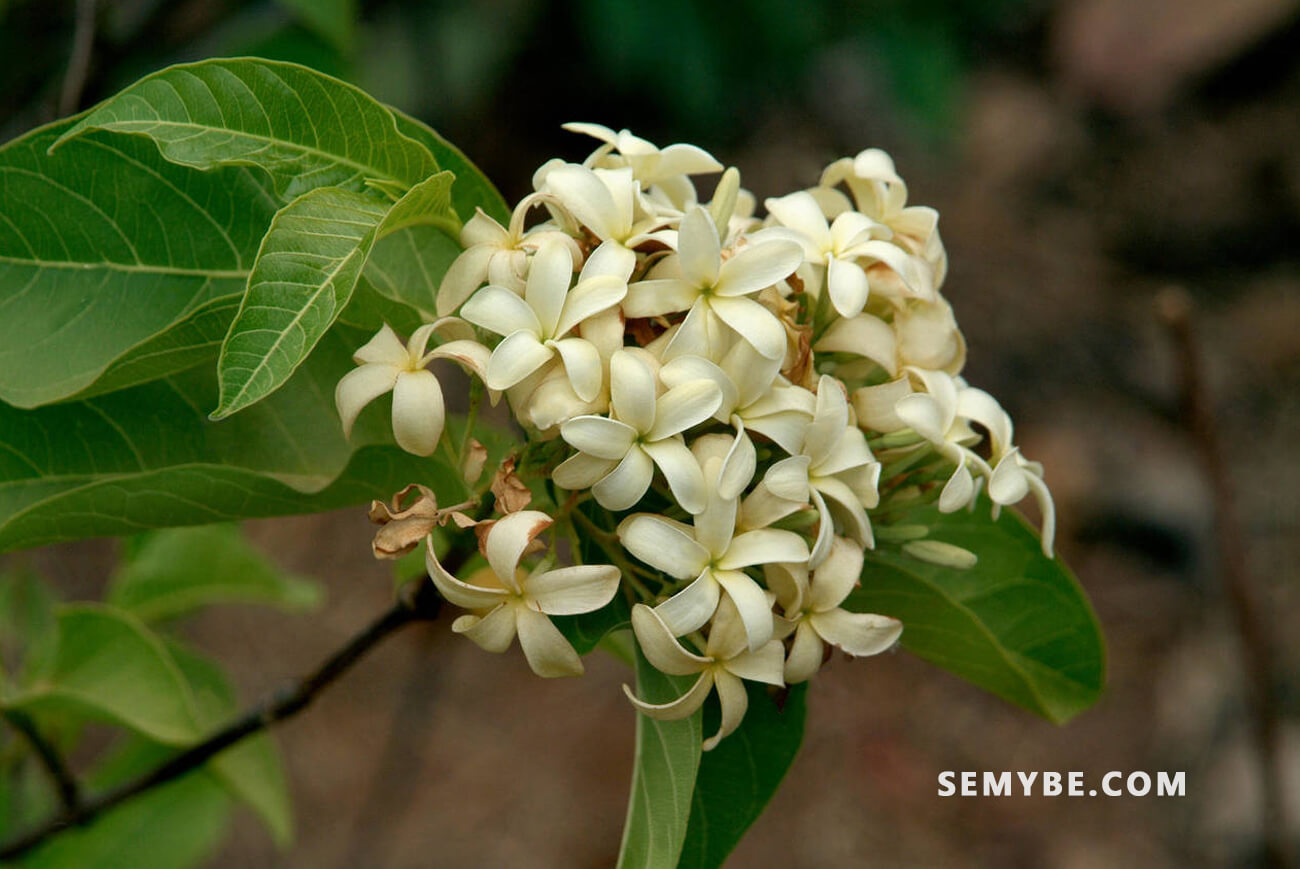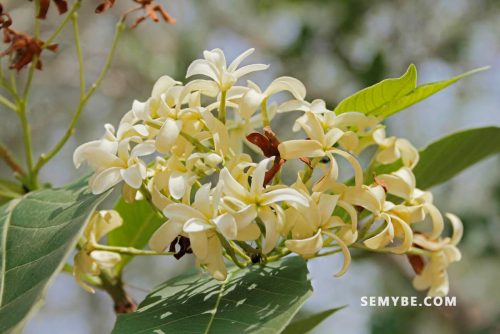
Holarrhena Floribunda
1. History and use
There are three main traditional indications for antidysenteric, diuretic febrifuge. Trunk bark and roots are used in the form of decoction or maceration in intestinal this plant: and parasites, blenorrhoea, ascites and sterility. ‘Holarrhena floribunda is prescribed as an antidysenteric and antiamibian in the African pharmacopoeia published by the OAU’.
2. Description of the plant
It is a tree that in the Sahel does not exceed 4 meters in height but can reach 15 meters in the Guinean region.The leaves are oval. The flowers are in axillary clusters bearing many fragrant white flowers fruits are pendulous linear follicles, grouped in pairs, up to 45 cm long.

3. Curative action
The trunk bark contains several alkaloids, in particular the anti-amine connaissin, but all clinicians insist on a certain toxicity of the drug which causes vertigo, insomnia and anxiety. Current use of your connessine is reserved for external use for the treatment of vaginitis and urethritis trichomonas.
4. Uses
- Amoebic Dysenteria
Make a decoction of 35 g of trunk bark in one liter of water, drink 250 ml of this decoction every morning and evening for a week to remove the amoebae.
- Trichomonas
To remove trichomonads, the same decoction of trunk bark must be used internally, and the woman must be thoroughly clean with the same solution twice a day.




